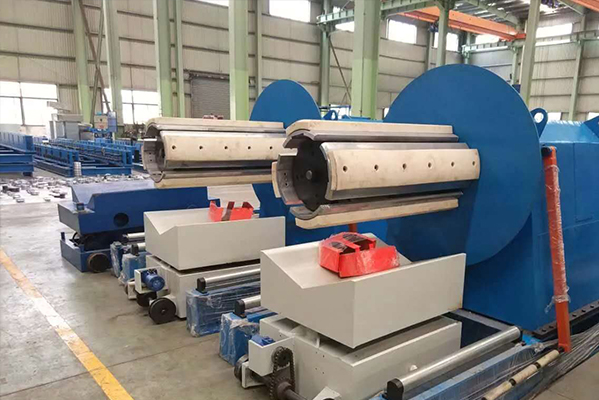Navigation Menu
Contact Us
- Email:
- info@wxavatar.com
- Address:
- Yurong Village, Yuqi Street, Huishan District, Wuxi, China.
Release Date:Mar 06, 2025 Visit:94 Source:Roll Forming Machine Factory
A rolling machine is an essential tool for anyone involved in metalworking, jewelry making, or even crafting. For beginners, understanding how to use a rolling machine effectively can seem daunting, but with the right guidance, it becomes a straightforward process. This article will walk you through the basics of operating a rolling machine, ensuring you can achieve precise and consistent results.
Understanding the Rolling Machine
Before diving into the operation, it's crucial to familiarize yourself with the components of a rolling machine. Typically, a rolling machine consists of two rollers, a handle or crank, and an adjustment mechanism to control the gap between the rollers. The primary function of a rolling machine is to reduce the thickness of metal sheets or wires while increasing their length.
Step-by-Step Guide to Using a Rolling Machine
1.Safety First: Always wear protective gear, including gloves and safety glasses, to protect yourself from metal shards and sharp edges.
2.Prepare Your Material: Ensure the metal sheet or wire you intend to roll is clean and free from any debris. This prevents damage to the rollers and ensures a smooth rolling process.
3.Adjust the Rollers: Use the adjustment mechanism to set the desired gap between the rollers. For beginners, it's advisable to start with a larger gap and gradually reduce it to achieve the desired thickness.

4.Feed the Material: Carefully place the metal sheet or wire between the rollers. Hold it firmly but gently to avoid any slippage.
5.Start Rolling: Turn the handle or crank to feed the material through the rollers. Apply consistent pressure to ensure even rolling. If the material is too thick, you may need to pass it through the rollers multiple times, gradually reducing the gap each time.
6.Inspect the Result: After each pass, inspect the material to ensure it meets your specifications. Make any necessary adjustments to the roller gap and repeat the process if needed.
Tips for Beginners
Start with Soft Metals: Beginners should practice with softer metals like aluminum or copper before moving on to harder materials like steel.
Maintain Your Machine: Regularly clean and lubricate the rollers to ensure smooth operation and prolong the life of your rolling machine.
Practice Patience: Achieving the perfect thickness may take several passes. Don’t rush the process; patience will yield better results.
Conclusion
Using a rolling machine for beginners doesn’t have to be intimidating. By following these steps and tips, you can quickly become proficient in operating a rolling machine. Remember, practice makes perfect, and with time, you’ll be able to handle more complex projects with ease. Whether you're working on metal sheets or wires, a rolling machine is a versatile tool that can significantly enhance your crafting or metalworking endeavors.